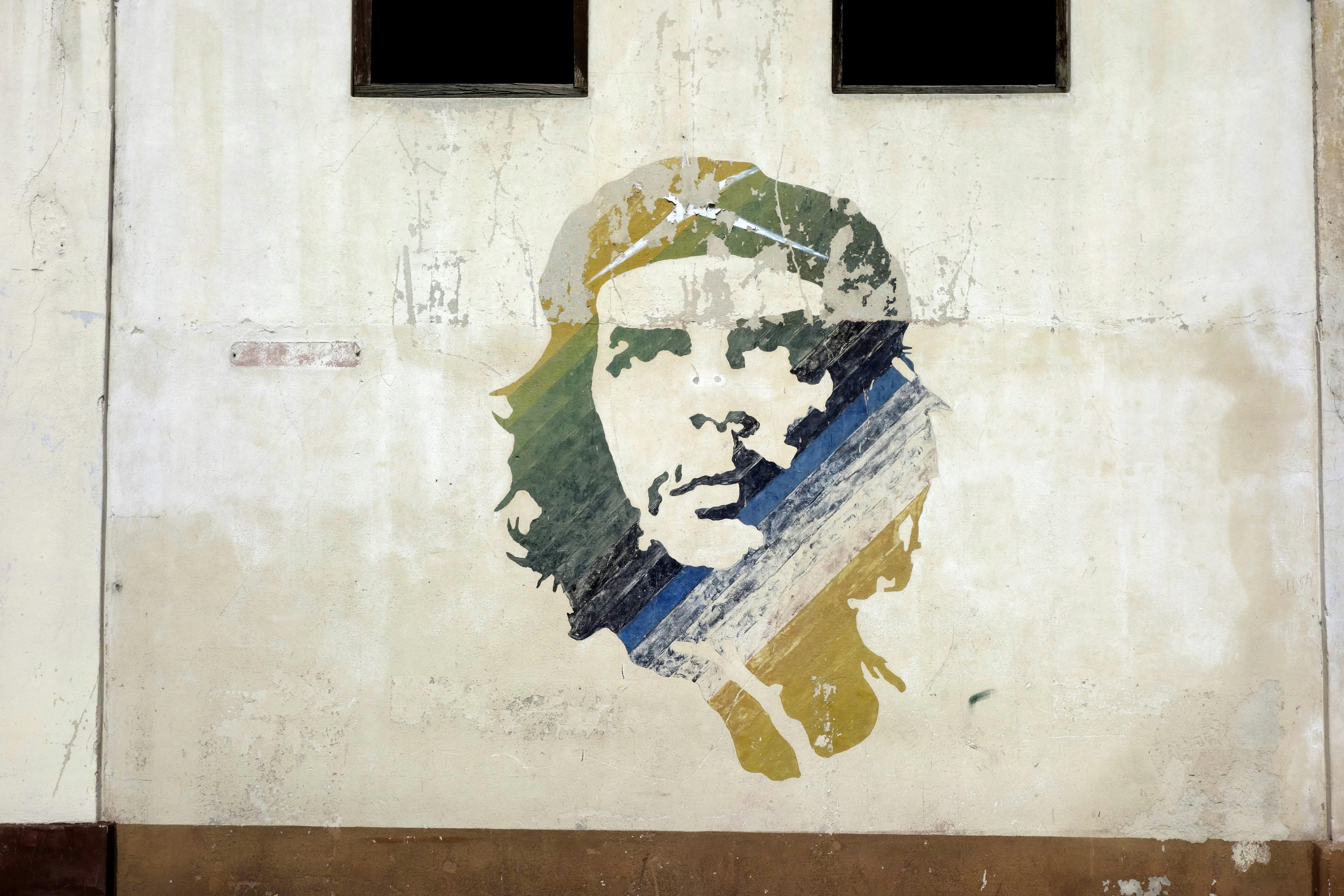Cuba’s Resilient Leadership: Practical Skills from History’s Icons
Ever notice how some leaders seem absolutely unshakeable in the face of overwhelming turmoil? For years, I’ve wondered what really sets “resilient” leaders apart from the rest—especially in places where adversity isn’t theoretical, it’s woven directly into daily life. Cuba, quite honestly, is le case study for mastering resilience-driven leadership. If you’re someone who’s genuinely interested in practical leadership transformation (and not just buzzwords), the next 2,500 words will be right in your wheelhouse.
Let me set the scene. Back in 2018, during a whirlwind professional tour of Havana, I sat across from a local educator—a woman who’d spent nearly thirty years pushing back against resource barriers, political pressure, and social upheaval. “Our leaders are forged, not taught,” she said. At first glance, I thought she was being dramatic, but as our conversation shifted through stories of Fidel Castro, Celia Sánchez, and even sports icons like Teófilo Stevenson, the truth was impossible to ignore: Cuba produces world-class resilient leaders because the very fabric of its history demands it.1
You’re here for actionable guidance, not an academic treatise. So, I won’t dwell too long on Cuban history’s raw drama (though it’s honestly more gripping than Hollywood sometimes). Instead, I’ll deconstruct the practical skills—the habits, mindset shifts, and proven frameworks—used by Cuba’s most influential figures. Interwoven, you’ll find real mistakes (not just Cuba’s, but my own), mistaken assumptions (because, let’s be honest, everyone underestimates the complexity), and emotional pivots that shaped a nation. At the very least, I promise you’ll walk away thinking differently about leadership—and, I hope, with new tools worth trying.
Roots of Resilient Leadership: Cuba’s Context
Here’s what gets me—Cuba, for all its challenges, isn’t just resilient by accident. It’s deliberate, strategic, and, by and large, born from necessity.2 The country’s leadership culture is practically a living organism: nurtured over decades of embargo, ideological conflict, climate disasters, and even sporting triumphs. When I say “resilient,” I mean leaders who deal with the unpredictable, outmaneuver resource scarcity, and keep communities tethered to hope when outcomes are uncertain.3
Cuba ranks among the top nations globally for disaster response planning—a legacy built from decades of hurricanes and economic blockade.4 UNESCO and World Health Organization reports have cited Cuba’s community-based resilience models as some of the most effective in Latin America.
Stop for a moment—imagine leadership when your “normal” means rationed power, shared adversity, and community reliance. It’s a different game. The skillset goes far beyond charisma or strategic planning. It’s about weaving together personal sacrifice, communal priorities, emotional intelligence, and relentless forward motion.
Core Principles: What Cuban Icons Actually Did
We hear about Castro’s speeches, Che’s rebellion, and Celia Sánchez’s quiet organizational genius. But, it’s the “how” that matters. Cuba’s historical leaders reinvented what resilience meant: blending improvisation with structured purpose, cultivating trust under pressure, and, crucially, learning to fail without losing momentum.5
- Adaptability: Problem-solving in real time with scarce resources
- Collective resilience: Making team wins count more than individual glory
- Strategic improvisation: Turning uncertainty into leverage
- Emotional anchoring: Holding communities together under stress
On second thought, what struck me most isn’t just their ability to withstand pressure, but the way they harnessed adversity—sometimes turning massive setbacks (“Hurricane Flora,” the 1962 Missile Crisis, even Olympic defeats) into fertile ground for innovation.7
Defining Resilient Leadership (and Why It’s Misunderstood)
I’ll be honest: most Western leadership frameworks miss something essential about resilience. In Cuba, “resilience” is communal, always embedded in social context, frequently messy, and sometimes flat-out counterintuitive. Rather than individual grit, what emerges is a model where strength is shared, strategy is flexible, and—crucially—mistakes are reframed as learning accelerators.8
Here’s my favourite takeaway from Cuban history: Leaders who are genuinely resilient lean into discomfort, model vulnerability, and invite feedback—even harsh criticism. The result? A feedback-rich environment where innovation can actually take root in adversity.
Modern Lessons: Applying Cuban Insights Today
What truly excites me about Cuba’s legacy is how relevant it feels—right now, in 2025. Think about your own context for a second. Maybe you’re leading a remote team, navigating economic uncertainty, or just facing down organizational inertia. The truth is, everyone can apply Cuban leadership principles: you don’t need a revolution, just a willingness to rethink resilience.
Let’s look at Celía Sánchez, for example. Her behind-the-scenes work in communication, logistics, and community mobilization kept the Cuban Revolution together even during total chaos10. What I’ve learned from her strategy is that true resilience isn’t just about persistence—it’s about integrating feedback, remaining agile, and circling back (sometimes painfully) to lessons learned.11
- Listen radically—solicit dissenting opinions and encourage vulnerability
- Empower teams to experiment with solutions, even if failure is likely
- Normalize emotional support as a strategic tool (it’s not “soft”—it’s vital)
- Use resource gaps to foster ingenuity, not frustration
Funny thing is, Western organizations spend fortunes on “change management”; Cuba does it with resourcefulness and social capital. Learning to improvise and adapt is not a cheap shortcut—it’s the backbone of their resilience.
Real Case Studies Table: Cuban Leaders in Action
A table always helps me make sense of complex context. Here, I’ve mapped out real Cuban leaders—their challenges, skill sets, and actionable lessons. Take a look, and think about how these models fit your own organizational reality.
| Leader | Resilience Challenge | Key Approach | Practical Skill |
|---|---|---|---|
| Fidel Castro | US Embargo, Political Isolation | Strategic Messaging, Adaptation | Narrative Control, Visioning |
| Celía Sánchez | Guerrilla Logistics, Resource Scarcity | Distributed Leadership, Collaboration | Network Building, Agility |
| Teófilo Stevenson | International Sports Pressure | Mindset Training, Discipline | Emotional Regulation, Focus |
| Che Guevara | Ideological Risk, Cross-Cultural Tensions | Mobile Leadership, Diverse Inclusion | Strategic Flexibility, Empathy |
Looking at this, what stands out (at least to me)? Each leader faced different types of adversity—some economic, some psychological, some global. Yet, across the board, their “practical skill” toolkit looks remarkably similar: strategic communication, distributed responsibility, and agile adaptation.12
“Resilience is built not from individual heroics, but from persistent collaboration and collective hope.”
I go back and forth on this, but the more I dig in, the more I realize: Cuba’s model is not about a single leader surviving—it’s about leaders creating conditions for everyone to persist, adapt, and thrive together.
Skillset Breakdown: Build Your Own Cuban Leadership Blueprint
I’m partial to breaking big ideas into actionable chunks, so here’s a processus étape par étape you can leverage to build your own “Cuban” resilience blueprint:
- Assess your context: What are the chronic stressors and acute shocks?
- Map shared resources—not just physical, but emotional and social capital
- Design for feedback: Create intentional opportunities for public, honest critique
- Normalize improvisation—make space for trial, error, and re-routing
- Celebrate recovery, not just achievement (“resilience” = rebound, not just endurance)
Letting that sink in, the practical magic isn’t just process—it’s mindset evolution. Resilient leaders in Cuba prioritize flexible adaptation over rigid control and see collective vulnerability as strategic, not risky.

Authentic Anecdotes: Cuban Leadership in Daily Action
I used to believe resilience was all about stoic endurance. Back when I first consulted for a Cuban NGO, I discovered that practical daily routines matter more than theory. Meetings opened with personal check-ins before business; setbacks were debriefed in the open, not swept aside. What struck me: resilience is taught through lived habits, not just strategic plans.14
“It’s not enough to endure; you have to transform adversity into collective energy.”
Let me clarify—the most powerful transformational experiences came after mistakes. During Hurricane Irma in 2017, I watched leaders use radio and in-person networks to let communities vent frustration, share lessons, and reimagine priorities on-the-fly.15 Instead of hiding failure, it became fuel for innovation.
Mistakes, Feedback, and Relational Learning
Here’s something I wish I’d realised earlier: In Cuba, admitting mistakes signals strength, not weakness. It creates psychological safety and paves the way for creative improvisation. The best leaders are the ones who double down on group reflection—sometimes even making time for “story circles” to process what went wrong. Sound familiar? It’s sort of like agile retrospectives, but built out of necessity.16
- Mistake-sharing rituals (normalize group reflection after setbacks)
- Open-access communication channels
- Community-driven crisis planning
- Transparent feedback structures
On second thought, these traditions aren’t just cultural quirks—they’re deliberate leadership tools. They lower defensiveness, raise trust, and foster a kind of generative energy hard to manufacture in more conventional systems.17
Social Capital and Resilience: Community Over Individuality
Based on years observing Cuban systems, what keeps me coming back is how seamlessly social capital fuels resilience. Forget celebrity-style individual achievement; in Cuba, leaders catalyze community power through ritualized check-ins, rapid information sharing, and peer empowerment. If anything, our Western obsession with “hero leaders” sometimes misses this strategic nuance.18
Pause here and consider: When was the last time your organization celebrated a team recovery rather than just a personal win? The Cuban approach systematically rewards group-wide learning—and, crucially, makes recovery visible.19
Leadership Rituals for Long-Term Resilience
Here’s something else that surprised me: Even in sports, leaders build team rituals around shared adversity—debriefs after lost games become forums for strategy, emotional release, and collaborative growth. Teams co-create solutions instead of defaulting to top-down “fixes.”20
- Weekly “story circles” or strategic debriefs
- Rotating leadership roles during high-stress periods
- Peer-driven resource allocation
- Celebration rituals for collective bounce-back moments
From my perspective, these rituals—far from being mere tradition—actually create durable social structures that buffer against shock. This insight absolutely changed how I approach team leadership. “Let’s play Cuban” isn’t just fun; it’s a proven way to foster group intelligence and long-term stability.
Conclusion + Takeaways: Are You Ready to Lead “Cuban Style”?
Let me step back. After dissecting Cuba’s legacy, what emerges isn’t just a checklist of resilience skills—it’s an entire worldview that reframes adversity. Whether you’re leading a startup, a classroom, a nonprofit, or a family, the essence is the same: resilience flourishes through shared purpose, adaptive habits, and fearless engagement with mistakes.
I’ll be completely honest—the real challenge is not acquiring new tools, but unlearning the myth of the solo leader. Cuban history makes clear: the “secret sauce” is radical collaboration fused with flexible, feedback-driven action.21
Looking ahead, Cuba’s model endures not because it’s perfect (far from it), but because it’s designed to survive—and thrive—in real, messy contexts. The best leaders don’t just bounce back. They move forward with collective intelligence, emotional depth, and a relentless commitment to the group.22
What to Remember When Building Resilient Leadership Skills
- Resilience is a team sport—design for group reflection, not just individual grit.
- Mistakes are your leadership fuel—embrace and leverage them openly.
- Strategic improvisation beats rigid plans when adversity hits.
- Celebrate recovery and learning, not only achievement.
- Adapt feedback systems to foster psychological safety and creativity.
To be frank, I’m still learning how to implement these lessons consistently. Sometimes, old habits crop up—avoiding dissent, seeking certainty, fearing team discomfort. But the Cuban blueprint gives me a way back, a roadmap for creating tangible, resilient progress even when conditions feel uncertain.
Références
Ouvrages cités et lectures complémentaires



